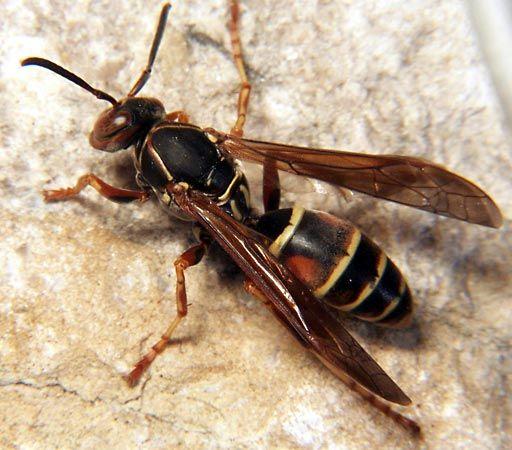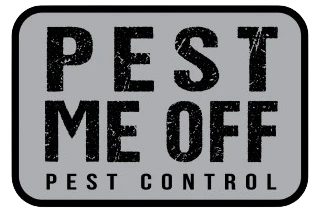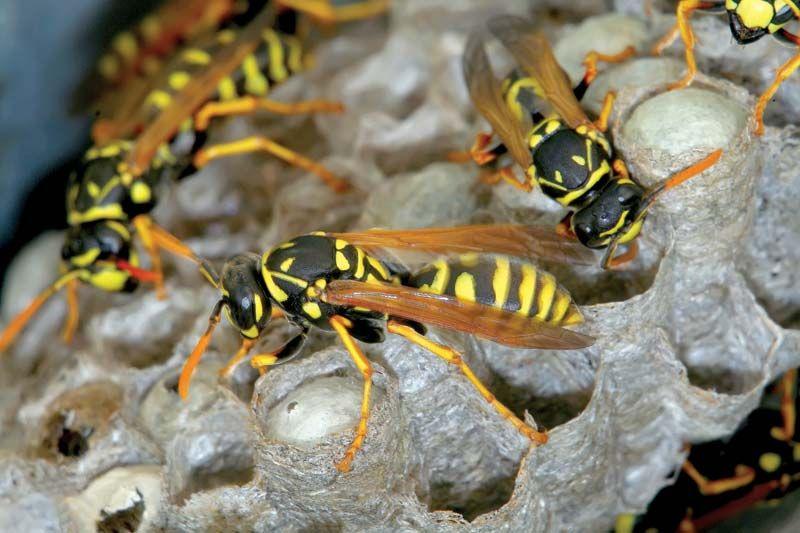As summer unfolds and your fruit trees burst with vibrant colors and succulent offerings, you may notice some uninvited guests buzzing around your garden. Wasps, with their distinctive stripes and relentless pursuit of sweetness, often seem to have a special affinity for your ripening fruits. But why do these often-misunderstood insects gravitate toward your Fruit tree? In this article, we’ll explore the surprising reasons behind their attraction to fruit trees and provide you with practical tips to keep them at bay. Dive in and discover how to make your fruit-bearing paradise a wasp-free haven!

Understanding the Attraction: What Draws Wasps to Your Fruit Trees
Fruit trees produce an irresistible array of scents and flavors that beckon wasps in search of sustenance. As the warm months roll in, ripe fruit releases sugars and fragrances that sweeten the air, serving as a beacon for these insects. In particular, the overripe or damaged fruit becomes a prime target, offering a nutritious feast. Wasps are particularly drawn to the sugars found in fallen or decaying fruit, which provide the energy needed for their foraging activities. The combination of visual appeal and aromatic signals makes fruit trees a hotspot for wasp activity, transforming your yard into a lively yet challenging environment.
Understanding wasp behavior can also illuminate why they are persistent visitors. These social insects are naturally attracted to a variety of items in their quest for food, including:
- Sweet nectar from flowers
- Other fruits nearby, especially those that are bruised or split
- Meat scraps or sugary beverages left unattended
When left to thrive in proximity to your fruit trees, these temptations can create a veritable buffet for wasps. To mitigate their presence, vigilant monitoring and prompt removal of overripe fruit become essential practices for maintaining a harmonious coexistence with these persistent pollinators.
Identifying the Signs: How to Spot Wasp Activity in Your Yard
Keeping a keen eye on your yard is essential for identifying early signs of wasp activity. These industrious insects are often drawn to sweet, ripe fruits, and noticing their presence can help you take preventive measures before they infest your trees. Look for the following indicators:
- Increased Insect Activity: If you see a swarm of wasps buzzing around your fruit trees, it’s a clear sign they have found a food source.
- Damaged Fruit: Check your fruits for holes or chew marks, as wasps often puncture skins to access the sugary juices inside.
- Nests Nearby: Wasps build nests in sheltered spots; finding one nearby is a strong indication that your orchard could soon be a target.
Monitoring your trees regularly can also help you gauge the overall health. The following factors can signal potential wasp interest:
| Signs to Watch For | Potential Implications |
|---|---|
| Fallen Fruit | Attracts wasps looking for an easy meal. |
| Cracked or Overripe Fruits | Sweet juices leak out, attracting these pests. |
| Presence of Other Insects | Could indicate a food source for wasps. |
Effective Prevention Strategies: Keeping Wasps at Bay
To ward off those pesky wasps, adopting a multi-faceted approach is essential. First and foremost, keep your fruit trees tidy. Regularly pick up fallen fruits and clear any debris around the base of the trees, as these are prime attractions for wasps. Additionally, consider using wasp traps that lure and capture them. You can easily make your own using a mix of sugar water and vinegar placed in a jar with a funnel; this method not only reduces their population but also minimizes the risk of stings while you enjoy your garden.
Another effective strategy involves enhancing the natural defenses in your garden. Encourage beneficial insects such as ladybugs and lacewings, which can help control wasp populations indirectly. Planting herbs and flowers that repel wasps can also serve as a deterrent. Here’s a quick reference table showcasing some effective plants to consider:
| Plant | How It Helps |
|---|---|
| Mint | Strong scent deters wasps |
| Eucalyptus | Repels many flying insects |
| Marigold | Natural repellent for a variety of pests |
Natural Remedies and Solutions: Safeguarding Your Fruit Without Chemicals
To protect your beloved fruit trees from pesky wasps while maintaining a chemical-free garden, consider employing several natural strategies. Essential oils are powerful allies; oils like peppermint, clove, and geranium can deter wasps due to their intense scents. Simply mix a few drops with water in a spray bottle and apply it to your trees’ branches and trunks. Additionally, placing insect-repelling plants around your fruit trees can create a natural barrier. Plants such as mint, marigold, and basil are known to repel wasps and other insects, while simultaneously adding beauty to your garden.
Another effective tactic is to use decoy wasp nests. Wasps are territorial and tend to avoid areas where they perceive a threat from other colonies. You can easily make a fake nest using paper or plastic, hanging it from branches in your fruit trees. Furthermore, consider using homemade traps to catch wandering wasps.
| Method | Description |
|---|---|
| Essential Oils | Apply a mixture of oils like peppermint and clove on trees. |
| Insect-Repelling Plants | Plant mint, marigold, and basil around fruit trees. |
| Decoy Nests | Create and hang fake nests in the trees. |
| Homemade Traps | Use inverted soda bottles filled with sugar water to entice and trap wasps. |
The Conclusion
While wasps may seem like unwelcome guests at your summer picnics and fruit-laden gardens, understanding their attraction to your fruit trees can empower you to take control of your outdoor space. By implementing the tips we’ve discussed, you can create a harmonious balance where you enjoy the bounty of your garden without the constant buzz of these curious insects. Remember, the key lies in proactive measures—pruning, proper hygiene, and clever deterrents can transform your garden into a wasp-free zone.

